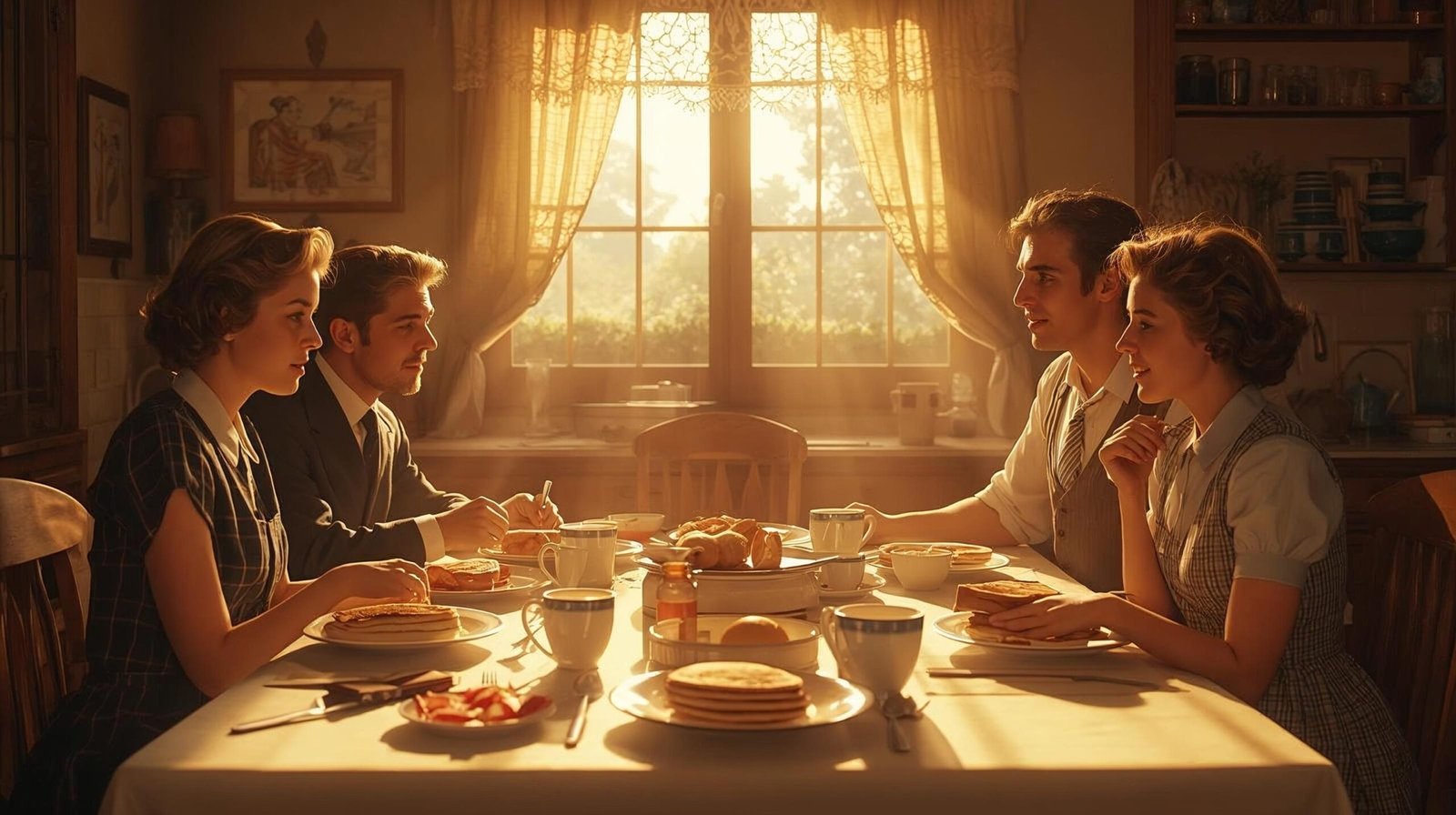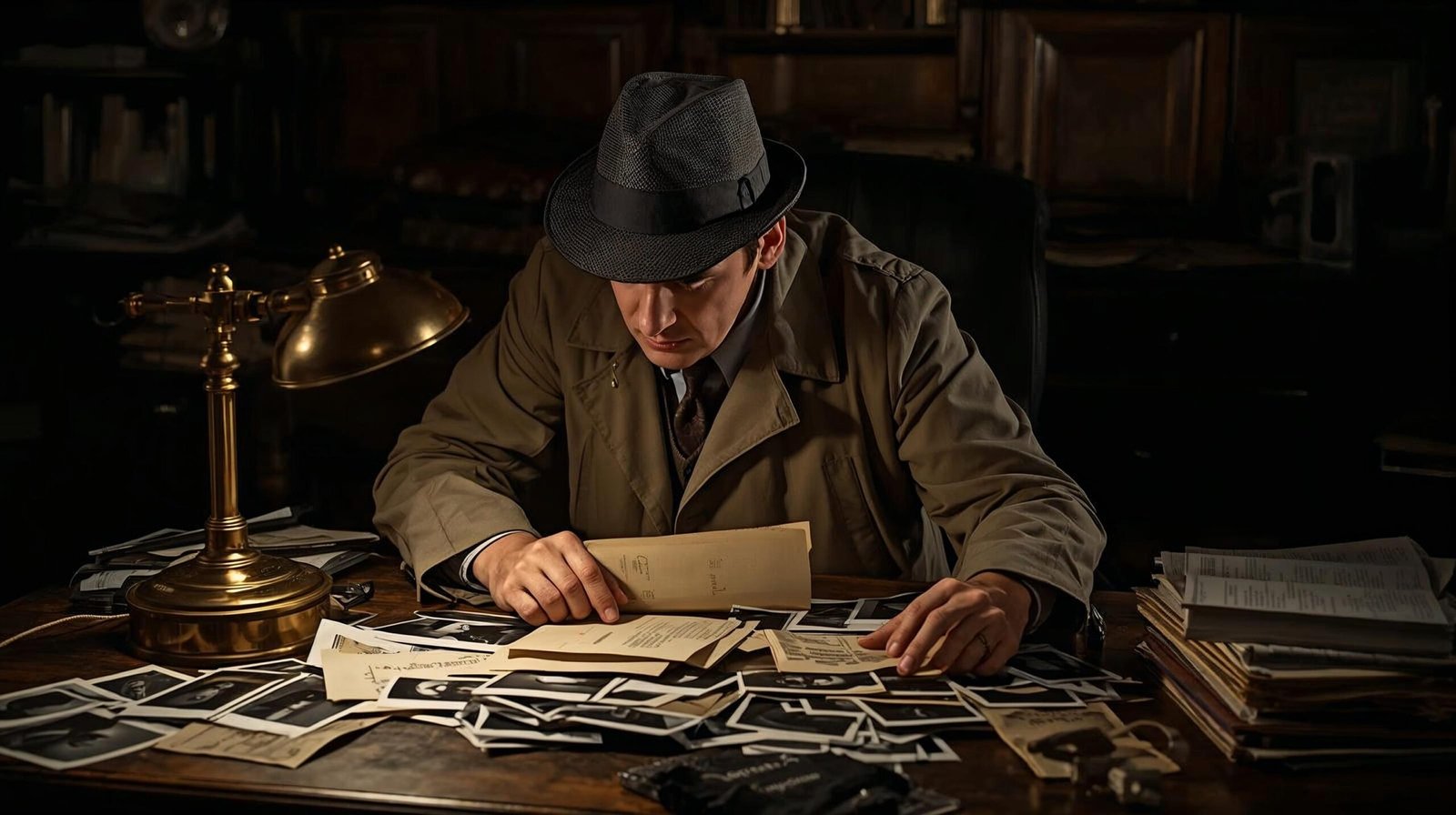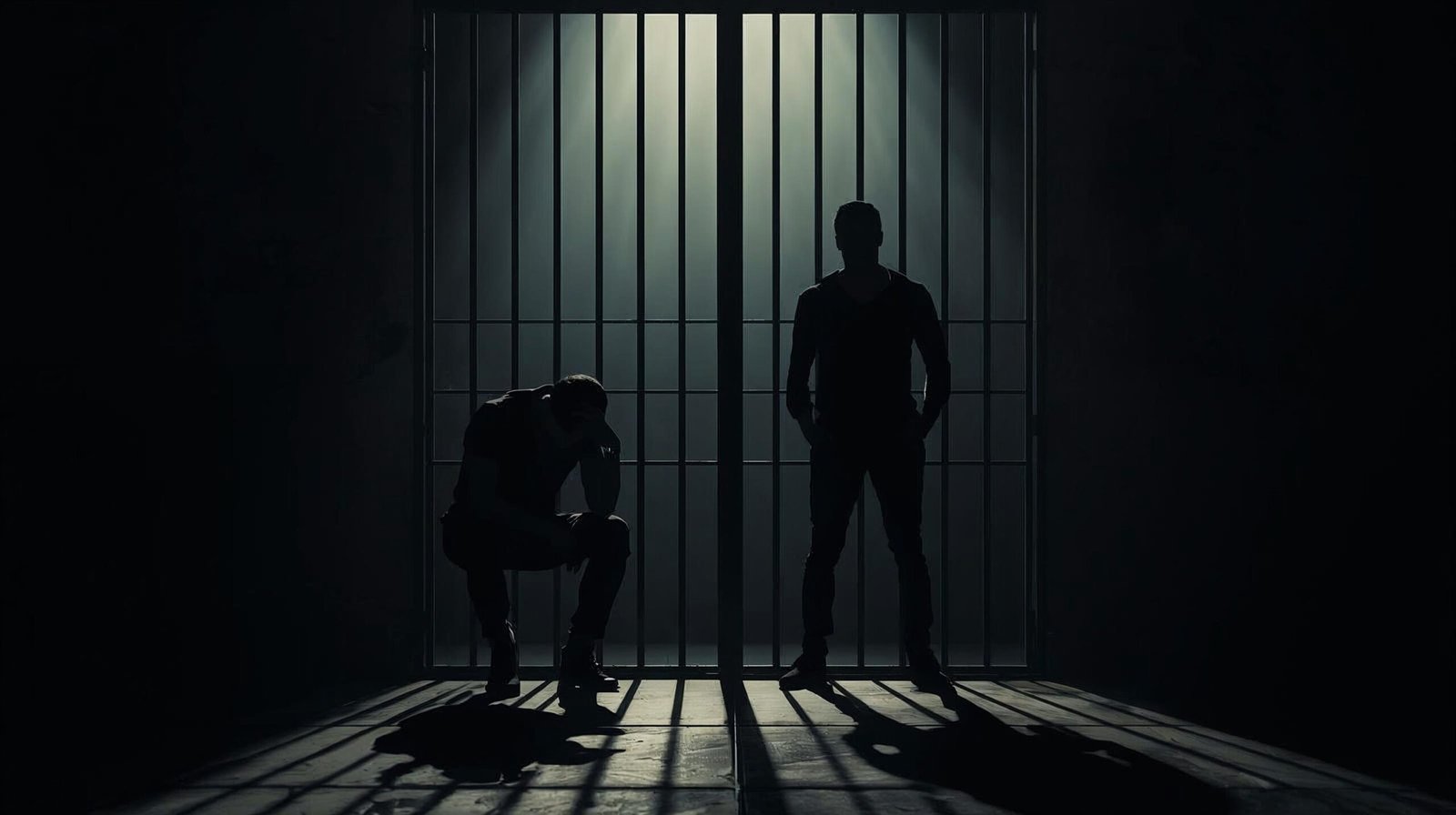In Cold Blood Summary: 11 Chilling Lessons from Truman Capote’s Masterpiece of True Crime
Introduction
Few works in American literature have left such an indelible mark as Truman Capote’s In Cold Blood. This in cold blood summary seeks to capture the psychological depth, narrative mastery, and haunting realism that made this 1966 publication a cornerstone of true crime writing. Capote’s book is not merely a recounting of murder; it is a chilling meditation on morality, fate, and the dark corridors of the human mind.
By blending journalism with the techniques of fiction, Capote redefined the boundaries of narrative nonfiction. This in cold blood summary offers an immersive journey through his masterpiece—exploring the crime, the investigation, and the moral chaos that lingers long after the final page.

Lesson 1: A Crime That Shattered an Illusion of Safety
The story begins in Holcomb, Kansas—a quiet, unassuming town where life appears orderly and predictable. The Clutter family, respected and prosperous, represents the American ideal. Yet, as this in cold blood summary reveals, one tragic night in November 1959 destroyed that illusion forever.
Richard “Dick” Hickock and Perry Smith, two ex-convicts, invade the Clutter home after hearing of a supposed safe filled with cash. What they discover instead is emptiness—no fortune, no riches, only human lives they senselessly destroy. Capote’s portrayal is both horrifying and precise, forcing readers to confront the fragility of perceived safety.
Lesson 2: The Power of Psychological Portraiture
Capote’s genius lies in his ability to humanize even the monstrous. This in cold blood summary emphasizes how the author delves deeply into the minds of both killers, especially Perry Smith. Through intimate details—his childhood trauma, his yearning for recognition, and his fractured dreams—Capote portrays Perry not as a caricature of evil but as a man consumed by his own despair.
This psychological complexity transformed In Cold Blood from simple reportage into art. The line between villain and victim blurs, leaving readers disturbed but empathetic.
Lesson 3: The Birth of the Nonfiction Novel
Before Capote, journalism was factual but emotionally distant. Fiction, on the other hand, was imaginative but detached from reality. Through In Cold Blood, Capote merged these worlds, creating what he termed the “nonfiction novel.” This in cold blood summary celebrates that innovation—the meticulous research of journalism fused with the character depth and pacing of fiction.
Capote’s approach influenced generations of writers, from Norman Mailer to Jon Krakauer. His innovation demonstrated that truth could be as gripping as any invented story.
Lesson 4: The Role of Fate and Chance
The tragedy at the heart of this in cold blood summary unfolds through random chance. Hickock learns of the Clutters from a former cellmate, who casually mentions the family’s wealth. Had that conversation never occurred, the murders might never have happened.
This randomness gives the narrative a terrifying realism. Capote’s point is chillingly clear—sometimes, the difference between life and death depends upon a single, meaningless conversation.
Lesson 5: The Landscape as a Mirror of Emotion
Holcomb’s vast plains and barren fields serve as silent witnesses to the crime. This in cold blood summary highlights Capote’s use of landscape as a psychological backdrop. The flat Kansas terrain mirrors the emptiness left behind after the murders, while the stark skies reflect the cold inevitability of justice.
Capote’s prose transforms geography into emotion; the stillness of the prairies becomes almost accusatory, echoing the silence of those who cannot speak for themselves.

Lesson 6: Moral Ambiguity and the Nature of Evil
In this in cold blood summary, one cannot ignore Capote’s exploration of morality. He refuses to present evil as simple or absolute. Perry Smith is capable of tenderness; he weeps for the suffering of animals and dreams of beauty. Hickock, though cruel, is also shaped by social neglect and personal failure.
Capote suggests that evil is not born but assembled—from poverty, neglect, and psychological damage. His portrayal provokes discomfort precisely because it denies readers the satisfaction of moral certainty.
Lesson 7: The Obsession with Truth
Truman Capote spent six years researching In Cold Blood, interviewing witnesses, law enforcement, and even the murderers themselves. This in cold blood summary underlines how his pursuit of truth became an obsession.
Capote’s closeness to Perry Smith, in particular, raised ethical questions. Could a writer remain objective when emotionally entangled with his subject? This moral dilemma haunts the book’s legacy and forms part of its enduring fascination.
Lesson 8: The Deceptive Calm of Justice
When the killers are finally captured and sentenced, one might expect closure. Yet this in cold blood summary demonstrates how Capote portrays justice not as triumph but as tragedy. The long wait on death row, the psychological torment, and the eventual hangings—all serve to question whether retribution truly heals society’s wounds.
Capote’s portrayal of the executions is devoid of sensationalism. Instead, he captures the dreadful stillness of lives ending without redemption.
Lesson 9: The Influence of Empathy on Journalism
One of the most striking aspects of this in cold blood summary is Capote’s empathy. Rather than treating the murderers as mere criminals, he seeks to understand them. This empathetic approach redefined journalistic ethics, inspiring a new era of narrative journalism that values psychological truth as much as factual precision.
Yet, this empathy also invites criticism—did Capote blur the line between understanding and justification? The question remains unresolved, adding to the book’s haunting allure.
Lesson 10: The Fragility of the American Dream
Through the Clutters, this in cold blood summary exposes the dark underbelly of the American Dream. Herbert Clutter embodies diligence, success, and morality. Yet none of these qualities protect him or his family from random violence.
Capote’s message is clear: beneath the polished surface of American prosperity lies vulnerability. The dream, for all its promise, cannot shield one from human cruelty.

Lesson 11: A Legacy That Redefined Literature
The final part of this in cold blood summary acknowledges the book’s monumental impact. Upon publication, In Cold Blood sold millions of copies, earning both acclaim and controversy. It paved the way for modern true crime narratives like Helter Skelter and The Stranger Beside Me.
But beyond its influence, Capote’s masterpiece endures because it confronts readers with uncomfortable truths about empathy, morality, and the haunting persistence of evil.
Capote’s Style and Narrative Technique
A vital component of this in cold blood summary lies in understanding Capote’s style. His prose is elegant yet clinical, emotionally charged yet restrained. Each scene unfolds like cinematic footage—painstakingly observed, subtly dramatized.
His alternating viewpoints between killers and victims create a rhythm of tension and despair. Capote’s ability to maintain suspense in a story whose outcome is already known showcases his unparalleled narrative control.
The book’s structure—divided into four sections, “The Last to See Them Alive,” “Persons Unknown,” “Answer,” and “The Corner”—mirrors the descent from innocence to desolation. Each title foreshadows both narrative and moral consequences, anchoring the in cold blood summary in a framework of inevitability.
The Ethical Controversies Surrounding the Work
No in cold blood summary would be complete without addressing the controversies. Capote’s close relationship with Perry Smith, his selective use of quotes, and alleged embellishments have drawn criticism. Some question whether every dialogue was authentically recalled, while others accuse Capote of emotional exploitation.
Yet, these debates only deepen the book’s legacy. They force readers to consider whether the pursuit of artistic truth can justify moral compromise. Capote himself never wrote another full-length book after In Cold Blood, perhaps burdened by the weight of his creation.
Symbolism and Imagery
Capote’s imagery amplifies the psychological impact of the story. The title itself—In Cold Blood—symbolizes calculated cruelty, yet it also suggests emotional numbness. This in cold blood summary observes how recurring motifs—the barren plains, the quiet town, the execution scaffold—reflect the stripping away of illusion and humanity.
The Clutters’ orderly home becomes a symbol of violated innocence. Meanwhile, Perry’s dreams of tropical islands contrast sharply with his grim reality, symbolizing the unreachable purity he yearns for.
Themes That Resonate Across Time
Though written in the 1960s, this in cold blood summary affirms that Capote’s themes remain painfully relevant. The interplay of violence, alienation, and moral complexity continues to define modern society.
Capote foresaw the public’s growing fascination with real-life crime—a phenomenon that now dominates podcasts, documentaries, and streaming series. His insight into the human thirst for understanding evil feels prophetic in today’s culture of sensationalism.

Capote’s Emotional Descent
Truman Capote poured not only his intellect but also his soul into this book. As this in cold blood summary suggests, the process left him emotionally fractured. He wept after witnessing the killers’ executions and later confessed to recurring nightmares.
Friends reported that Capote’s personality darkened after the book’s publication, as though he had absorbed too much of the darkness he sought to portray. In Cold Blood became both his masterpiece and his undoing—a haunting paradox in literary history.
Critical Reception and Enduring Influence
This in cold blood summary must acknowledge the book’s reception. Critics hailed it as a masterpiece of style and structure. Norman Mailer praised its precision, while Joan Didion cited it as a landmark in American letters. However, some accused Capote of sensationalism, arguing that he glorified killers rather than honoring victims.
Nevertheless, the book’s literary merit is undeniable. Its meticulous detail, emotional complexity, and moral depth have secured its place among the greatest works of American nonfiction.
Lessons for Modern Readers
In this in cold blood summary, several lessons emerge for modern audiences:
-
Evil often disguises itself in ordinary faces.
-
Justice and morality rarely offer closure.
-
Empathy, though noble, can be psychologically perilous.
-
Truth in storytelling demands courage—and sometimes sacrifice.
Capote’s narrative remains not just a document of a crime but a timeless exploration of the human condition.
The Real-Life Impact of the Clutter Murders
The tragedy detailed in In Cold Blood sent shockwaves throughout midwestern America. The Clutter family’s murder was not merely a local story—it represented a collective shattering of innocence across the United States. Until then, small-town America believed itself insulated from the chaos that plagued larger cities.
This in cold blood summary must emphasize how Capote captured that sense of disbelief and disillusionment. Through precise observation, he illustrated how fear and suspicion seeped into the hearts of neighbors who once left their doors unlocked. Suddenly, everyone in Holcomb looked at one another with unease. Capote’s portrayal of that emotional contagion remains one of his most profound achievements.
Even decades later, scholars and criminologists refer to the Clutter case as a psychological turning point in America’s perception of safety. It marked the end of postwar innocence and the beginning of an age where violence could erupt anywhere, without motive or warning.
The Role of Harper Lee in Capote’s Journey
While In Cold Blood is rightly attributed to Truman Capote, it is crucial to acknowledge the indispensable role of his lifelong friend Harper Lee, the author of To Kill a Mockingbird. Lee accompanied Capote to Kansas, assisted him with interviews, and provided a moral balance to his intensity.
Her empathetic nature often softened Capote’s more probing questions, enabling them to win the trust of locals who might otherwise have rejected them. This collaboration enriches the human dimension of this in cold blood summary, reminding readers that even monumental literary achievements are rarely the product of one person’s effort alone.
Without Lee’s presence, Capote might not have gained the deep access that made his narrative so authentic. Their partnership reflects the delicate balance between empathy and ambition—one of the book’s central moral themes.

Cinematic Adaptations and Cultural Legacy
No in cold blood summary would be complete without acknowledging the adaptations that carried the story to new generations. In 1967, Richard Brooks directed a powerful film version of In Cold Blood, shot partly in the original Clutter home and the exact Kansas locations where the crimes occurred.
The decision to film on location lent the movie a chilling realism. Robert Blake’s portrayal of Perry Smith remains one of the most haunting performances in American cinema. Decades later, other adaptations and dramatizations—such as the 2005 film Capote starring Philip Seymour Hoffman—revived interest in both the story and its author. Hoffman’s performance earned him an Academy Award, further cementing the book’s enduring cultural influence.
Each retelling invites new audiences to grapple with the same moral ambiguities and emotional conflicts that Capote so masterfully revealed. The resonance of the story across time underscores its universality: that evil, empathy, and tragedy are not confined to one era.
Capote’s Struggle with Fame and Aftermath
The monumental success of In Cold Blood transformed Truman Capote from a respected writer into a cultural celebrity. He appeared on television, mingled with social elites, and basked in global recognition. Yet beneath the glamour lay profound emotional exhaustion.
Capote’s friends observed that he was haunted by the story’s moral weight and by his relationship with Perry Smith. When Smith and Hickock were executed, Capote reportedly suffered a breakdown. The emotional burden of witnessing their deaths—the very conclusion his narrative required—left him spiritually hollow.
Critics suggest that Capote’s subsequent creative silence was not due to lack of talent but emotional depletion. Having poured every ounce of empathy and observation into In Cold Blood, he had nothing left to give. His unfinished manuscripts in later years only deepen the tragedy of his brilliance.
The Enduring Relevance of Capote’s Vision
Today, nearly seven decades after its publication, Capote’s work continues to provoke reflection. In an age saturated with sensational crime documentaries and digital voyeurism, In Cold Blood remains a reminder that true storytelling requires depth, restraint, and humanity.
Modern journalists and writers often revisit this in cold blood summary not merely as a study in crime, but as a study in conscience. Capote’s achievement lies not in his documentation of horror, but in his insistence on finding meaning within it. His work challenges each reader to look beyond outrage and seek understanding—a principle that remains vital in today’s polarized world.
Ultimately, the enduring legacy of In Cold Blood lies in its capacity to transform horror into reflection and tragedy into timeless art. It stands as a monument to the written word’s power to illuminate even the darkest corners of the human soul.
Final Reflection
Truman Capote’s In Cold Blood transcends genre. It is not merely a book about murder—it is a meditation on empathy, justice, and the moral complexity of existence. This in cold blood summary serves as both an homage and a guide, offering readers a doorway into the psychology of crime and the fragility of innocence.
Its lessons remain potent reminders that truth, when articulated with courage and compassion, possesses a force greater than fiction. And as long as readers continue to question the balance between morality and understanding, Capote’s words will never fade.
Conclusion
This in cold blood summary reveals far more than a murder story—it unveils the anatomy of empathy, the corruption of innocence, and the eternal conflict between justice and understanding. Truman Capote’s In Cold Blood stands as a mirror reflecting the hidden violence beneath civilized society.
Even today, its haunting questions linger: What makes humans capable of such cruelty? Can understanding evil redeem it—or only deepen the darkness?
In Cold Blood remains one of the most disturbing yet enlightening works of literature, reminding readers that truth, when told without mercy, can be more terrifying than fiction itself.
For more insightful literary explorations and timeless book reviews, visit shubhanshuinsights.com — where stories meet reflection and truth finds its voice.
FAQs
1. What is the main theme of In Cold Blood?
The primary theme explored in this in cold blood summary is the moral complexity of human nature—how good and evil coexist within the same mind.
2. Why did Truman Capote write In Cold Blood?
Capote sought to revolutionize journalism by creating a “nonfiction novel” that captured both factual accuracy and emotional truth.
3. Is In Cold Blood based on a true story?
Yes, the events are entirely real, depicting the 1959 murders of the Clutter family in Holcomb, Kansas.
4. How long did Capote work on the book?
As detailed in this in cold blood summary, Capote spent nearly six years researching, interviewing, and perfecting the narrative.
5. What makes In Cold Blood significant today?
It remains a foundational work in narrative nonfiction, influencing countless writers and redefining how real events can be transformed into literature.